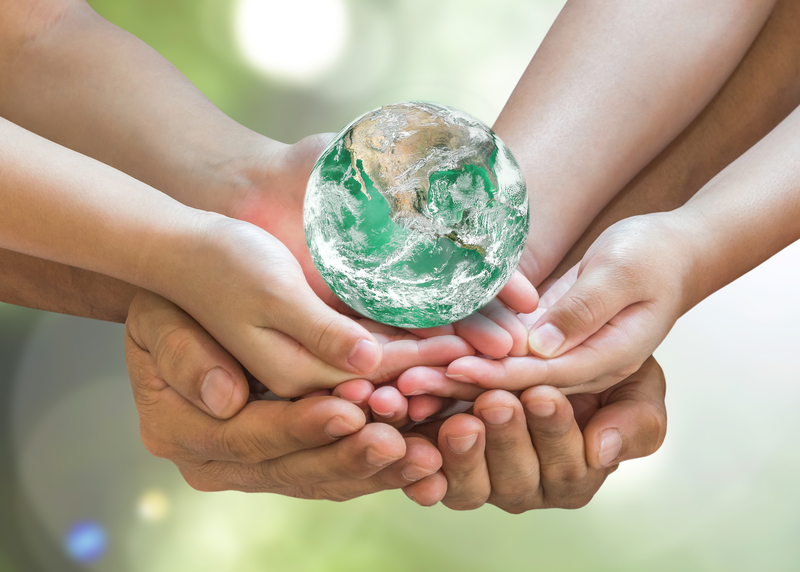The Environmental Impact of Neglecting Packaging and Cardboard Disposal
Introduction
Packaging and cardboard are everyday materials that many individuals and businesses use for shipping, storing, and protecting goods. However, the environmental impact of neglecting packaging and cardboard disposal is a growing concern that too often goes unnoticed. Improper management of packaging waste has significant ramifications for ecosystems, human health, and our planet's future. In this article, we will explore the comprehensive effects of careless packaging and cardboard disposal, uncovering how these actions contribute to pollution, deforestation, climate change, and more. We will also provide actionable guidance on proper packaging waste management for a more sustainable tomorrow.

Understanding Packaging and Cardboard Waste
The global increase in e-commerce, retail, and food delivery has resulted in a surge in packaging and cardboard usage. From shipping boxes to product wrapping, packaging materials are ubiquitous. Unfortunately, much of this packaging ends up as waste, exacerbating environmental problems when not disposed of responsibly.
- Cardboard and Paperboard: Widely used for boxes, cartons, and containers.
- Plastic Packaging: Used for wrapping, cushioning, and waterproofing.
- Mixed-Material Packaging: Combines cardboard, plastics, metals, and other materials, making recycling challenging.
The negative impact of neglecting packaging waste management is profound and multifaceted, affecting both natural and human-made environments.
Why Proper Packaging Waste Disposal Matters
Neglecting packaging and cardboard disposal does not only pose an inconvenience--it triggers a chain reaction of environmental hazards. Proper disposal, particularly through recycling, conserves resources and reduces pollution, while neglect amplifies environmental degradation.
- Space Consumption in Landfills: Packaging materials, especially cardboard, occupy substantial landfill space. Cardboard accounts for approximately 31% of municipal solid waste by weight in some regions.
- Energy Consumption: The production of new packaging materials requires significant energy. Recycling just one ton of cardboard saves over 9 cubic yards of landfill space and 46 gallons of oil.
- Deforestation: Cardboard is typically made from wood pulp. Increased demand and poor recycling rates encourage unsustainable tree harvesting.
- Pollution: Improper disposal can lead to litter, waterway blockages, and the release of toxic substances as packaging decomposes.
The Carbon Footprint of Packaging and Cardboard Neglect
One of the most significant yet overlooked effects of neglecting packaging and cardboard disposal is its impact on greenhouse gas emissions. Decomposing cardboard emits methane, a potent greenhouse gas much more effective at trapping heat than carbon dioxide.
- Landfill Methane Emission: When cardboard is buried in landfills, it decomposes anaerobically, releasing methane. This accelerates climate change and contributes to global warming.
- Production Emissions: Manufacturing new cardboard necessitates deforestation and high energy use, both of which are associated with increased carbon emissions.
- Energy Savings via Recycling: Recycling cardboard reduces overall greenhouse gas emissions by minimizing the need for raw materials and energy-intensive production processes.
Case Study: Packaging Waste and Its Global Footprint
According to the World Economic Forum, packaging waste accounts for nearly one third of all plastic and cardboard waste worldwide. In 2019 alone, the world produced over 400 million tons of packaging waste, much of which was not recycled or properly disposed of.
In fast-developing urban areas, neglected packaging waste leads to clogged drainage systems, exacerbating flood risks and causing urban pollution. Beaches, rivers, and even remote forests show the telltale signs of improperly disposed packaging materials, posing threats to wildlife and fragile ecosystems.
Environmental Consequences of Cardboard Neglect
1. Landfill Overflow and Resource Scarcity
Landfills are designed to handle waste, but their capacity is finite. The environmental effects of poor packaging and cardboard disposal include:
- Space Depletion: Cardboard boxes are bulky and consume significant landfill volume.
- Leachate Pollution: Moisture interacting with decomposing cardboard can create leachate--a toxic liquid that can contaminate soil and groundwater.
- Resource Depletion: Throwing away recyclable packaging squanders precious resources like timber, water, and energy.
2. Deforestation and Biodiversity Loss
The manufacture of cardboard packaging is a primary driver of deforestation. Each neglected box represents lost potential for recycling, which could have reduced the demand for virgin wood. Major consequences include:
- Loss of Habitats: Forests are critical for biodiversity. Their removal for producing fresh cardboard threatens countless species.
- Soil Erosion: Deforestation destabilizes soil, leading to erosion and loss of fertile land.
- Water Cycle Disruption: Trees play a vital role in the water cycle, impacting rainfall and freshwater availability.
3. Waterway and Marine Pollution
Improperly discarded packaging, especially lightweight cardboard and mixed materials, often ends up in water bodies. When this occurs:
- Ecosystem Disruption: Packaging debris can smother aquatic life, block sunlight, and introduce toxic chemicals.
- Wildlife Hazards: Animals can ingest packaging materials, causing injury or death.
- Micro-pollution: Small fibers and particles from degrading cardboard contribute to overall water pollution, affecting drinking water and marine food chains.
4. Urban and Visual Pollution
Urban areas are particularly susceptible to the negative impact of packaging waste. Poorly managed disposal leads to unsightly litter, blockages, and increased vermin populations. Key effects include:
- Blocked Drains: Cardboard waste can block drainage systems, contributing to urban flooding.
- Public Health Risks: Accumulated waste attracts pests, which can spread disease.
- Negative City Image: Littered streets reduce property values and affect tourism.
Best Practices for Packaging and Cardboard Waste Management
Understanding the environmental impact of neglecting packaging and cardboard disposal underscores the importance of improved waste management. Here are key strategies for reducing your environmental footprint:
1. Reduce Usage Wherever Possible
- Choose minimalist packaging and purchase in bulk.
- Opt for products with reduced or reusable packaging.
2. Reuse Packaging Materials
- Repurpose boxes for storage or shipping.
- Encourage circular use within your workplace or community.
3. Recycle Properly
- Break down boxes for efficient transport and recycling.
- Keep materials clean and dry to prevent contamination.
- Follow local recycling guidelines to ensure your efforts count.
4. Advocate for Sustainable Packaging
- Support brands using recycled content and eco-friendly design.
- Push for legislation that encourages extended producer responsibility (EPR) and sustainable innovation.
5. Educate and Raise Awareness
- Teach proper disposal methods to employees, customers, and community members.
- Promote the environmental benefits of recycling packaging and cardboard waste at every opportunity.
Government and Corporate Roles in Mitigating Packaging Waste
While consumers play a vital role, systemic change requires sustained efforts from governments and businesses. Policy interventions may include:
- Incentivizing recycling through taxes or rebates.
- Implementing packaging standards to encourage recyclability and minimal waste.
- Mandating the use of recycled content in new packaging.
- Funding campaigns and research into sustainable alternatives.
Corporations can enact internal policies, such as reducing unnecessary packaging, offering return and reuse programs, and being transparent about their environmental impact.

Technological Innovations for Sustainable Packaging
Emerging technologies promise to reduce the negative environmental effects of packaging and cardboard neglect:
- Biodegradable Packaging Materials: Made from renewable sources like cornstarch and bamboo, these break down naturally.
- Smart Packaging: Technologies such as QR codes and sensors help consumers properly dispose of packaging.
- Improved Recycling Processes: New systems can separate mixed-material packaging more efficiently, increasing recycling rates.
Conclusion: Charting a Greener Future
The environmental impact of neglecting packaging and cardboard disposal cannot be overstated. From clogged landfills and deforestation to increased pollution and greenhouse gas emissions, improper disposal poses a direct threat to planetary health and human well-being.
By taking responsibility for our packaging waste, advocating for systemic change, and embracing sustainable alternatives, we can significantly reduce our ecological footprint. Remember, every box recycled, every package reused, and every reduction in packaging counts toward a cleaner, healthier future. The need to address the environmental impact of packaging and cardboard waste is more urgent than ever--let's all do our part to make a lasting positive difference.
